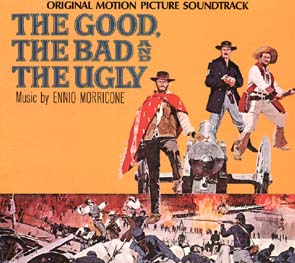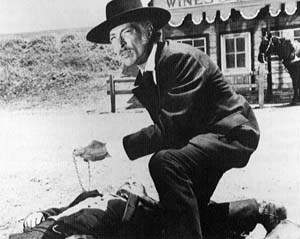
| |||||||
|
If Sergio Leone defined the style of the Spaghetti Western, Morricone invented its music. His hoofbeat rythmns, whistling themes, and the use of the human voice as an instrument became the standard for the scores to follow. Morricone's simple, haunting tunes did more than merely fill the gaps between passages of dialogue. They became an audible presence -- punctuating action, accelerating a chase scene, or driving a showdown to its conclusion. This coordination of action and music has prompted some scholars to compare Leone's films to opera.
While many composers sought to copy Morricone, others like Carlo Rustichelli, Angelo Lavagnino, Piero Piccioni and Francesco DeMasi successfully adapted their own unique styles to the films. DeMasi, one of the most prolific of the Spaghetti composers, wrote scores for thirty-five films including Ringo the Lone Rider (1967), Payment in Blood (1968) and Any Gun Can Play (1968). Bruno Nicolai, a close Morricone associate for many years (conducting numerous Morricone scores), composed some of the best Spaghetti Western music with scores for films such as Run, Man, Run (1967) and Adios Sabata (1970). Fans of the genre cite the music as the single most significant element in these films and the soundtrack recordings are highly prized by collectors. In fact, the demand is so great today, many previously unreleased scores are finding their way onto CDs. One only needs to hear Morricone's The Big Gundown, Piccioni's Minnesota Clay, Luis Bacalov's Django, or Stelvio Cipriani's The Stranger Returns to understand why. These are very listenable scores, much like those of Dimitri Tiomkin and Elmer Bernstein. |





